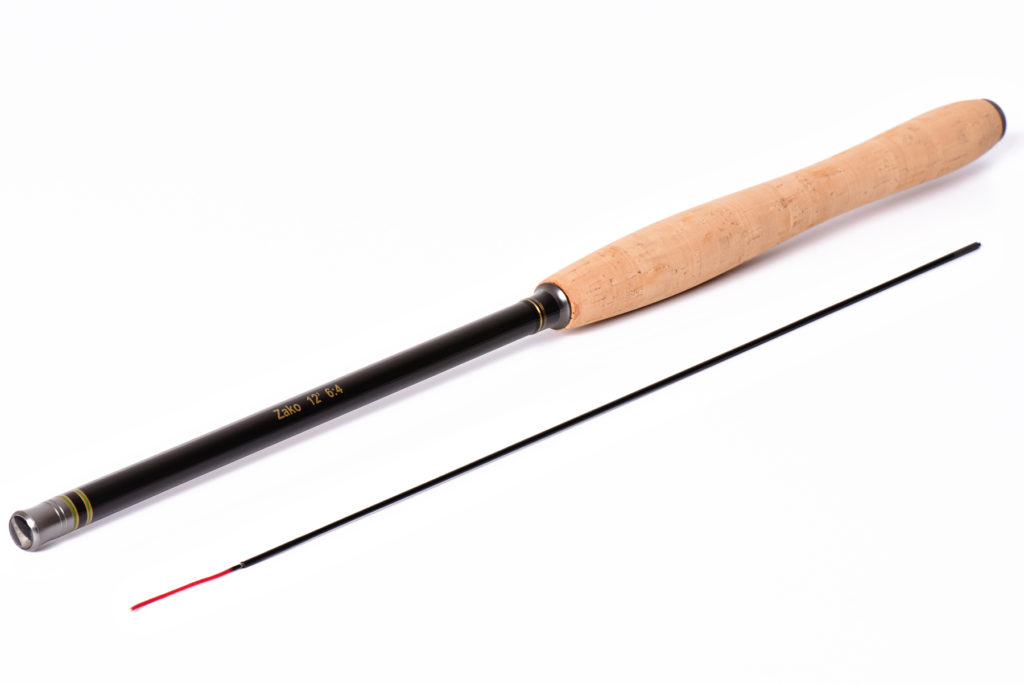
There are a lot of tenkara line options out there for tenkara rods. In the past, Zen offered many. They all had their pros and cons. Here’s a quick review of the tenkara line options and why we created our Zen Floating Line.
Furled Tenkara Lines
Furled and tapered Uni tenkara line provided a traditional experience and since it was a bit heavier, really allowed anglers to feel their rods load and learn the timing. It also cast well in the wind and absorbed water – both a good thing and a bad. It could splash if the angler allowed it to dip in the water, but this was a good reminder to those new to tenkara, to keep their rod tip up, and out off the water for true tenkara tactics.
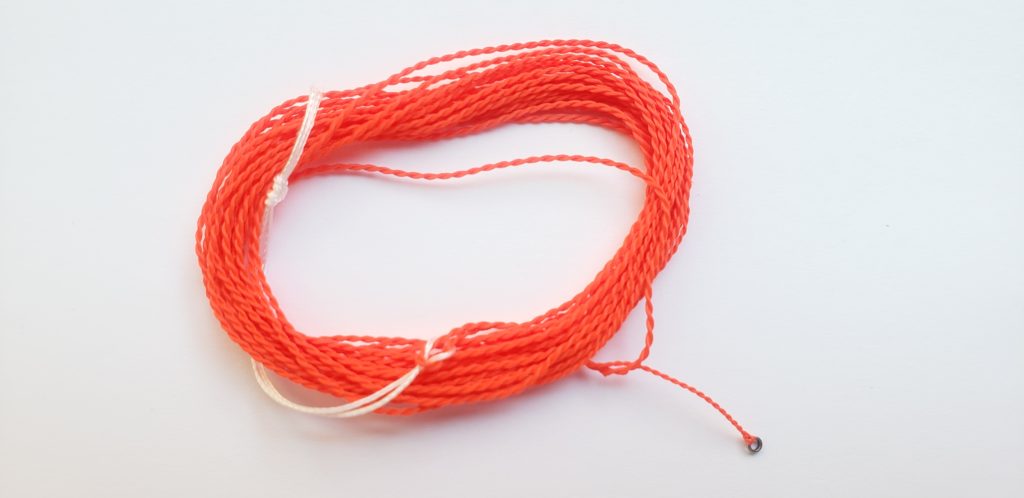 Kevlar Furled Tenkara Lines
Kevlar Furled Tenkara Lines
Kevlar tenkara line is another furled and tapered line that’s heavy and sinks. It doesn’t stretch like Uni line and is more abrasion resistant. It was good for fishing under the surface when you want a quick and solid hook set, but still remain true to the furled tenkara tradition.
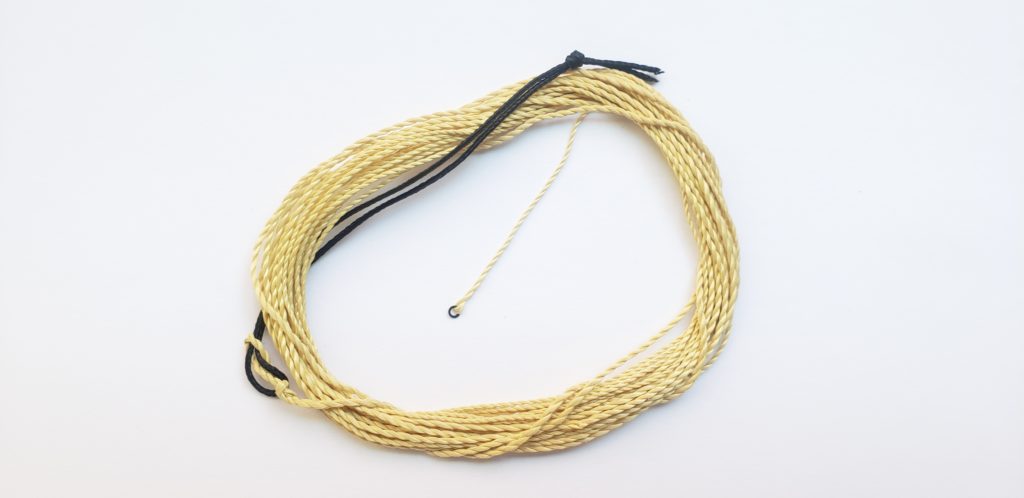 Tenkara Level Lines
Tenkara Level Lines
Level line tenkara lines are on the opposite end of the spectrum. They are super lightweight and delicate, typically made of fluorocarbon and are level or untampered. The best thing about these lines is that they come in spools so anglers can cut them to the length they prefer. The fluorocarbon is denser than mono so it casts a bit easier, but take that with a grain of salt. The lines are very thin and it takes finesse and no wind to cast these babies with accuracy. And while on the subject of wind, when it starts blowing, these lines are usually swept into the air and it becomes virtually impossible to keep your fly in the water. As annoying as this is, the very worst thing about these lines is their slinky effect upon a tangle. These suckers become serious bird nests that can push any patient bodied human over the edge. It’s usually easier to just cut it lose and start over. Stretch and memory are the worst.
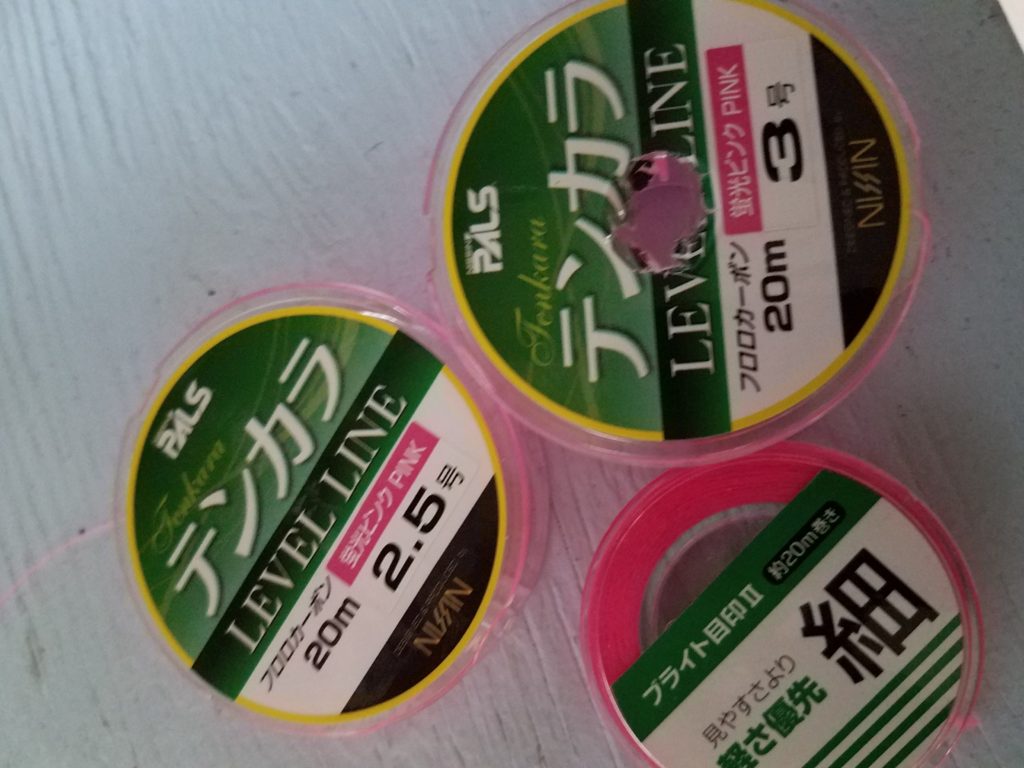 Hybrid Tenkara Lines
Hybrid Tenkara Lines
Then came the hybrid level tenkara lines. Zen was the first to offer theses a number of years ago and since “let them go” for better options. They were constructed of a furled or braided level line for the first 9 or 10ft of the line, then transitioned by a knot, into a single mono level line, thus creating a tapered effect. This gave the level line more weight and heft for easier casting but still kept a smaller diameter on the second half of the line for a more delicate presentation. The lines could be cut to individualize the length you wanted and you were left to tie an overhand knot on the end. Problem is, these lines were still full of memory and tangled. They were annoying to store and needed to be flattened to cast well still possessing that birds nest/slinky effect due to their material.
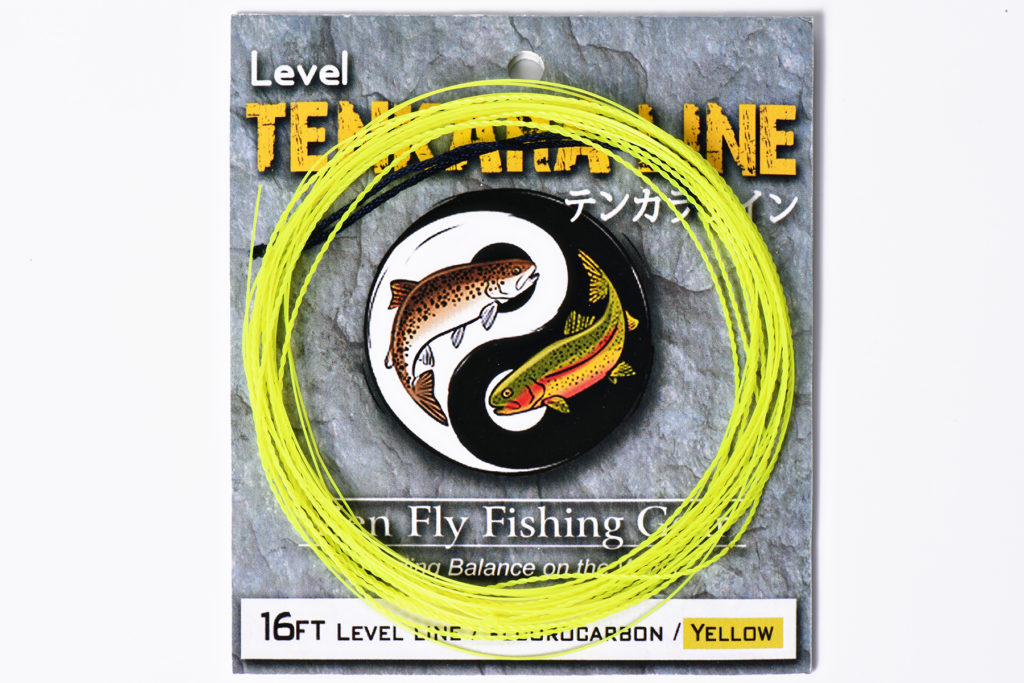 Nylon Tenkara Lines
Nylon Tenkara Lines
Nylon tenkara lines were also an offering of the past that’s been taken up by other companies. Nylon was more delicate than Uni thread furled lines, it floated but stretched and tangled…really no substantial advantage to the hybrid level except that it was less visible under water. And, the Nylon Tenkara lines had a tippet rings so you couldn’t cut your line to your desired length like the Hybrid tenkara lines.
![]() Floating Tenkara Lines
Floating Tenkara Lines
Finally Floating tenkara lines appeared. These were heavier than level lines but lighter than Uni furled lines. They cast in wind but didn’t tangle and had lower memory than levels, hybrids and nylons. However, original floating lines were “thick” and pieced together….until, the Zen Floating tenkara line appeared. This line was a culmination of the best parts of all the above and then some. Here’s why:
- It’s delicate…about the same diameter as a 4/4.5 level line.
- It has almost no memory.
- It has no stretch.
- It floats so when the wind starts to roar you can lay it on the water and continue your drift.
- It’s dense enough to cast into strong winds.
- It has a connection loop for easy rod attachment.
- It has a tippet ring for easy tippet connection.
- It allows for a loop-to-loop connection for adding a leader or avoiding knot tying.
- It floats but when used with fluorocarbon tippet, makes an excellent nymphing line and subsurface setups (no stretch and solid hook sets).
- It has an 8″ built-in orange sight indicator to make your life and visibility better.
- It has color coded connection loop tags for length identification (we’re the first and only).
- It comes in an assortment of lengths.
- It doesn’t tangle and can even be kept in your pocket with no worries of bird nests or other habitats being created.
- It’s made 100% in Colorado, USA.
- It’s Eco-friendly and 100% recyclable (other tenkara lines and fly lines are made of various polys and PVC that leech and break down from water and sun exposure, releasing nasty stuff).
- It’s supple, lays out and casts beautifully…
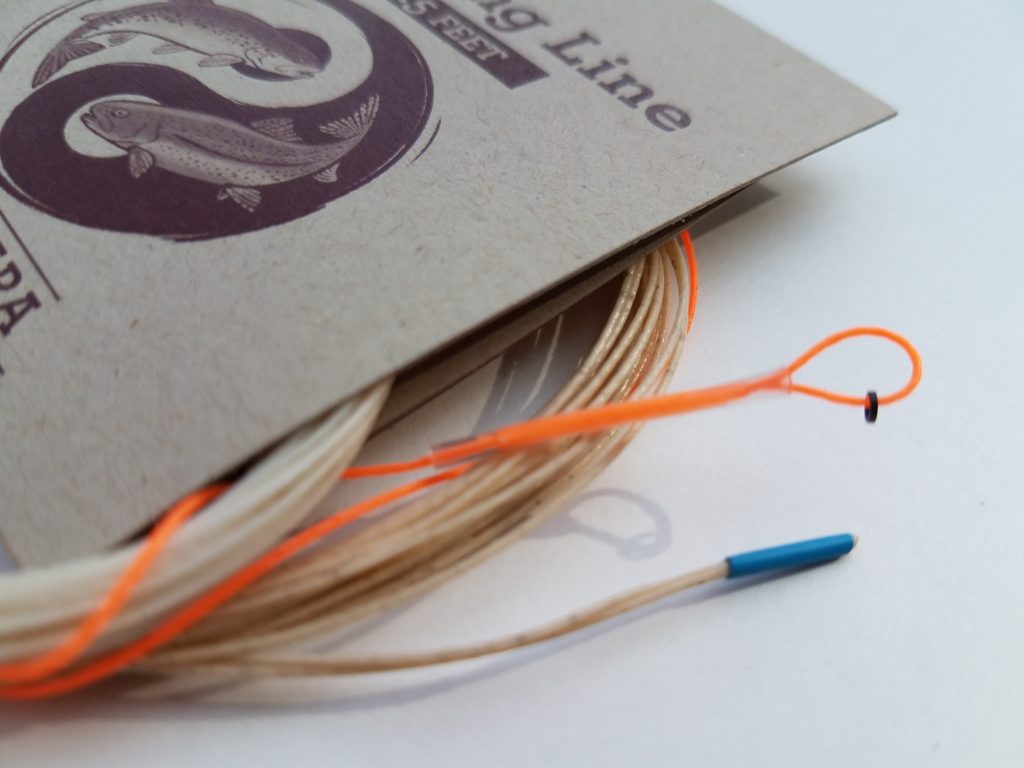
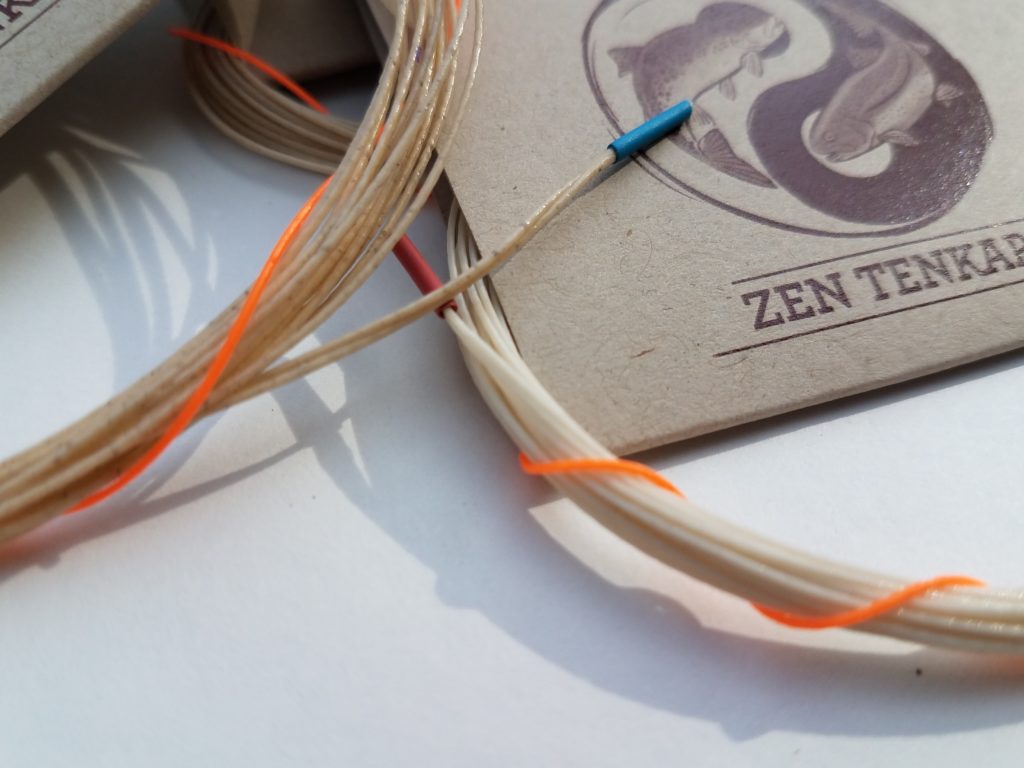
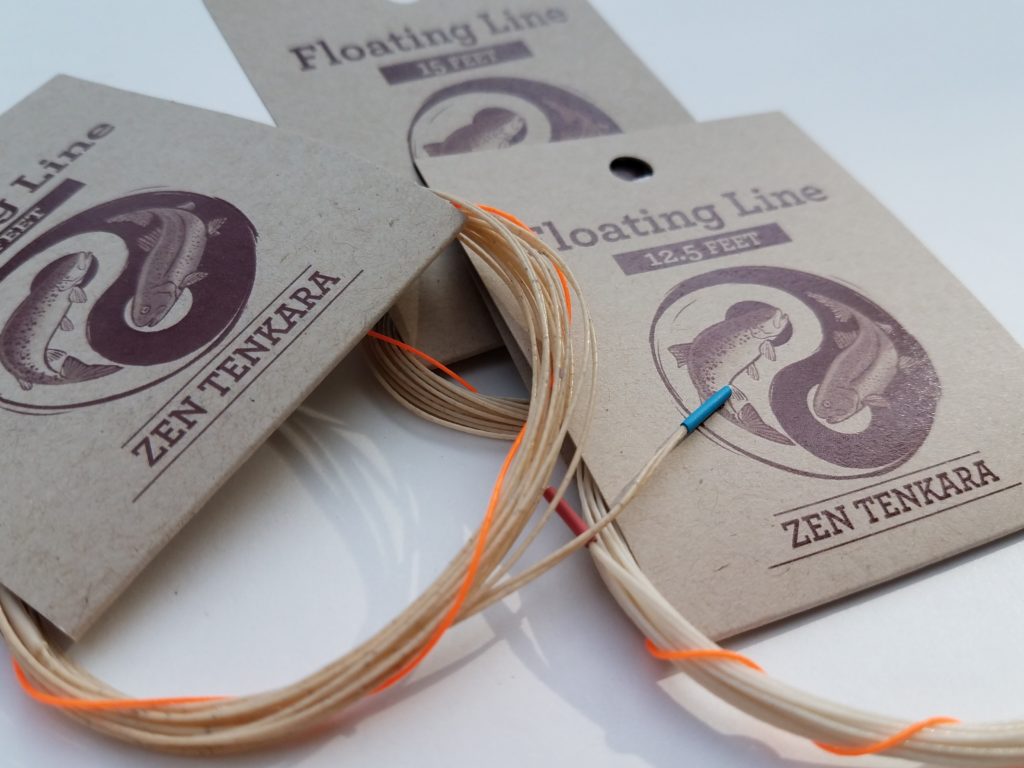 So, at Zen we asked why offer these other subpar tenkara line offerings and we cleared out shelves of products that didn’t really perform to the highest of standards. We still provide customers with options for Uni tenkara Line because it’s a great learning tool and a traditional experience. And that’s why we also continue to make Kevlar tenkara lines. But we believe so strongly in our Floating Tenkara Lines, that we did away with the nylon, and the level lines and even the hybrid line which we were the first to offer. They just don’t perform that well. Currently we’re working to improve level lines and making them softer and more castable. We’re also working on grain weighted and rod matched tenkara fly lines for our “bigger fish” rods….the first and only tenkara company to do this. We’re innovating and forward thinking. Zen Tenkara….defining American Tenkara.
So, at Zen we asked why offer these other subpar tenkara line offerings and we cleared out shelves of products that didn’t really perform to the highest of standards. We still provide customers with options for Uni tenkara Line because it’s a great learning tool and a traditional experience. And that’s why we also continue to make Kevlar tenkara lines. But we believe so strongly in our Floating Tenkara Lines, that we did away with the nylon, and the level lines and even the hybrid line which we were the first to offer. They just don’t perform that well. Currently we’re working to improve level lines and making them softer and more castable. We’re also working on grain weighted and rod matched tenkara fly lines for our “bigger fish” rods….the first and only tenkara company to do this. We’re innovating and forward thinking. Zen Tenkara….defining American Tenkara.


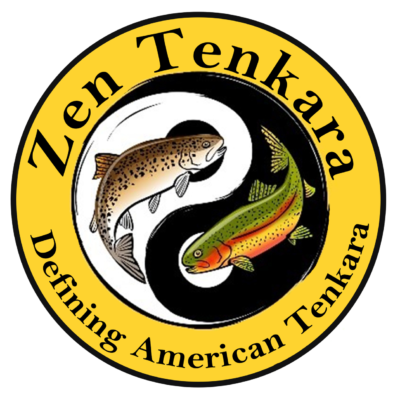

Used your floating line today for Golden trout in the Kernville, CA watershed – was I impressed! Casts easily with good control even in windy conditions, floated well without causing drag with a small length of line on the water and the tippet ring on the terminal loop made things easy. Great line – worth the price.
So glad you liked it. Tight lines and happy fishing
Pingback: | Zen Tenkara
I’m a warm water fisherman most of the time, fishing for Bass and Bluegill from a kayak and along the banks of ponds.
I normally fish with various topwater poppers and a few subsurface flies like a Wooly Booger.
How do you think this line perform in this situation?
David I think the line would perform well because it has no stretch and will allow for you to get that great “pop” along the surface and have a lot of control. I throw Wooly Boogers all the time and use it for both nymphing and throwing streamers. The Hi-Vis sight indicator is great for the nymphing and removes the need for an external sight indicator (bobber). You can go straight tippet or use a leader to gain more length. Mono or fluorocarbon if you want to sink faster for the Woolys or other subsurface patterns. So far I haven’t had a single customer not love the line. I really think you’ll be quite happy – and if you’re not, let us know!
I normally fish an 11ft or 13ft Tenkara rod. Using the Floating Tenkara lines, what is the recommended tippet length for dry fly presentations. I read frequently that total line length should be nominally no longer that the total length of the rod. If that is the case, should my floating line be shorter by the amount of tippet that I would use?
Thanks for for inquiry. The answer is, “that depends”. If your goal is to fish your tenkara rod traditionally, then keep your lines and setup shorter so you can keep everything off the water. If not, then the benefit of the Floating Line is that you have the option of laying it on the surface if you want to or need to because you’re casting a line too long to keep off the water. If you are using an 11ft or 13ft tenkara rod and are using it on small water, I probably pair it with either the 11ft or 12.5ft Floating Line and use about 4ft of tippet. This keeps your set up tight and easy to keep off the water. If you are fishing a wide river or body of water with those same tenkara rods, then a longer line might prove beneficial. If you use an 18ft line you can’t hold that off the water so thats when a Floating Line saves the day. A tenkara level line or Furled line will sink and pull your fly down. The amount of tippet depends less on the line and more on your setup. I generally would still use between 4ft up to 7ft of tippet with a longer line – because I probably wanting that extra reach. So tippet length should be determined by the setup/flies you’re using, the water you’re fishing and the fish themselves and has less to do with the type of line you’re casting. If you typically cast a furled or tenkara lever line and like to use 3ft or tippet, I would suggest using the same on the Floating. I use less tippet and short lines in tight places and keep line off the surface of the water to fish more traditional tenkara. But on bigger water I use a longer line and tippet setup and fish American style by laying the line on the surface of the water. Hope this is helpful please reach out with additional questions. We’re help to help support your fishing.